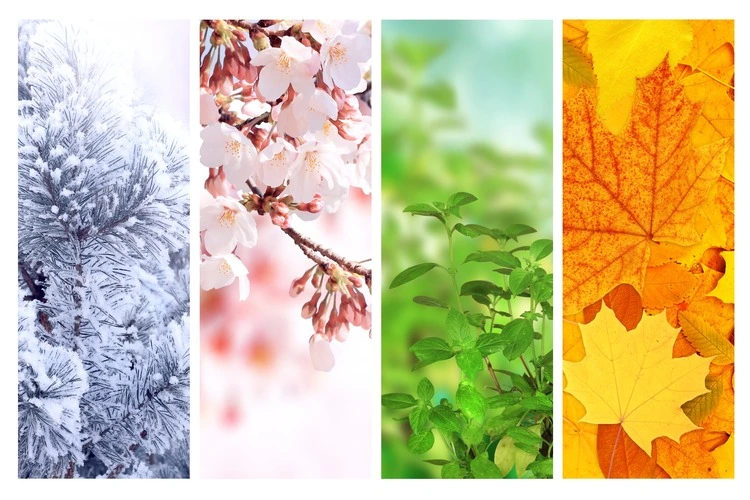
Research suggests new seasons are surfacing – such as ‘haze’ and ‘trash’ seasons – while some are entirely disappearing
By
In temperate and sub-polar regions of the earth, the seasons are traditionally divided into spring, summer, autumn and winter. Many tropical regions have two seasons: the monsoon or rainy season and the dry season. Seasons can also be dictated in some parts of the earth by the timing of important ecological events such as hurricane season and wildfire season. However, human activity is starting to dramatically alter such traditional seasons. Our very presence on the planet is shifting these seasonal patterns into more unfamiliar territory.
Enjoying this article? Check out our related reads:
In a recent study conducted by researchers from LSE and the University of York, evidence suggests new seasons – entirely anthropogenic ones – are surfacing. For example, ‘haze seasons’ are appearing in the northern and equatorial nations of Southeast Asia, where the sky becomes filled with smoke for several weeks.
Such a season is caused by the constant burning of vegetation to clear forests for agricultural uses, an action only intensifying in recent decades due to the increased demand for palm oil. This burning can often spread into protected forested areas.
In recent years, smoky conditions have led to the closure of schools in Malaysia and Singapore; hundreds were forced to shut their doors, as well as reducing visibility for residents.
Another new season is ‘trash season’, where tidal patterns bring plastic to Bali shores in Indonesia between the months of November and March. Vast swathes of plastic – up to 60 tonnes in one day – are being removed by personnel, trucks and loaders. To combat the situation, Australia’s national science agency is hoping to trial utilising remote cameras and artificial intelligence to track litter and identify hot spots.
While new seasons are cropping up, some are disappearing entirely. Take the example of altered migratory animal behaviour, such as the decline of seabird breeding seasons in northern England.
One place experiencing this is Long Nanny in Northumberland, home to the largest mainland population of Arctic terns in the UK. A recent census showed breeding pairs had dropped from 1,037 in 2024 to 724 this year – a decline of around 30 per cent. Reasons to explain this drop include climate change, avian flu and overfishing.
Climate change is also impacting winter sport seasons and tourism, as snowfall decreases in key alpine regions including the Alps, Rockies and Scandinavia. The trend is particularly worrisome in the Southern Hemisphere, with regions such as New Zealand and South America face delays in snowfall along with shorter peak seasons. Artificial snow has been used as a temporary measure, but this method is not without significant environment costs, including increased water and energy consumption.
By 2050, estimates suggest only 10 of the 21 former Winter Olympic host cities may remain climatically reliable.
A new rhythm
Today, researchers believe ‘syncopated’ seasons are more common. Essentially, these are similar to the emphasis placed on beats or off-beats in familiar music.
Syncopated seasons include hotter summers and milder winters in temperate climates. These seasons also bring more frequent and severe extreme weather, exposing more people and ecosystems to stress.

Key seasonal events – such as leaves falling or when particular migratory species arrive and leave – are becoming more unpredictable. To reflect this shift, researchers have coined the term ‘arrhythmic seasons’ to refer to abnormal rhythms. This can include earlier springs or breeding seasons, shorter winters or hibernating seasons and longer summers or growing seasons..
Changes in seasonal patterns completely throw life cycles of plants and animals off kilter – in turn disrupting human communities that rely on them for economic, social and cultural reasons.
For example, in Northern Thailand, human activity has changed nature’s rhythms and in turn, affected the supply of water and food. To begin with, this was caused by upstream dams, disrupting cycles by blocking fish migration. On top of this, climate change has shifted rainfall patterns, making dry seasons longer and rainy seasons shorter but more intense.
How do we cope?
According to researchers, our reaction to changing seasons is pivotal in the outcome of environmental conditions. In southeast Asia, awareness of the ‘haze season’ has led to better forecasting, installation of air filters in homes, and the establishment of public health initiatives.
However, these methods are only adaptive. Without tackling the root cause, societies may quickly just adapt to the existence of a new season, with governments and powerful institutions easily able to minimise their responsibility and shift blame elsewhere.
Instead, changes in seasons requires a more sizeable shift in our thinking. Researchers call for better awareness of time outside of our traditional ways of thinking in days, hours and minutes – considering local ways of understanding time including those shaped by the arrival of the rainy season, or solar and lunar cycles.
Harnessing perspectives from diverse communities such as Indigenous peoples, is what researchers believe will be key in enhancing responses to environmental changes.



